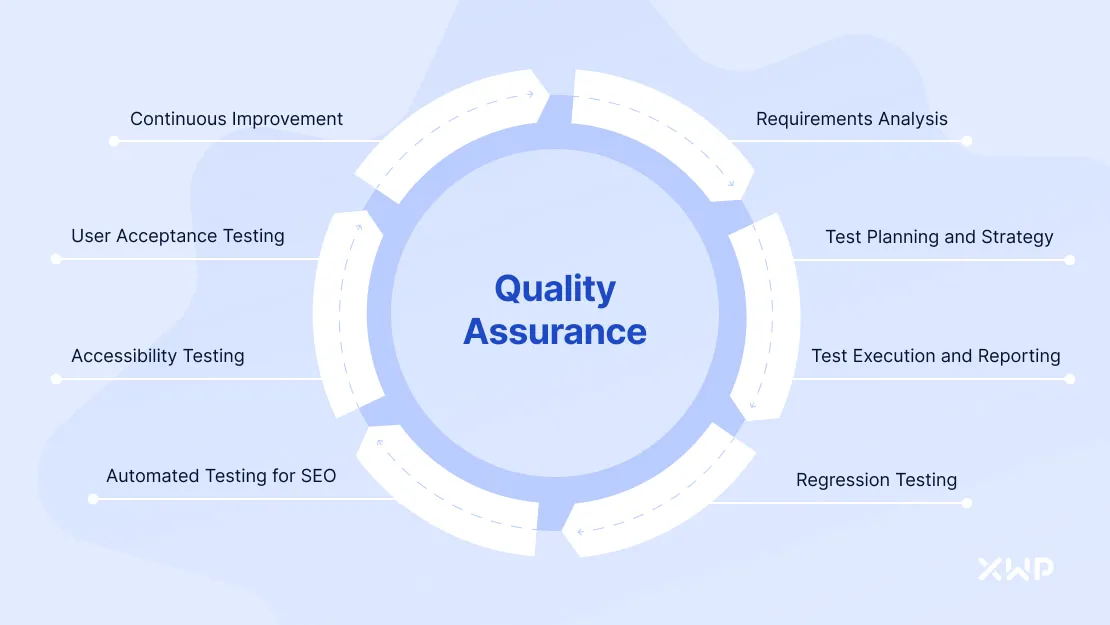
In this day when technology is supreme, a website becomes the face of a company. It is often the first interaction a potential customer has with a company, making it crucial for a website to function smoothly and provide an excellent user experience.
Getting that start just right needs some rigorous testing to ensure that the thing really delivers top quality. Quality testing makes sure that not only can users easily find everything they’re after on a website, but it also ensures that this stuff works well under all sorts of different conditions. There’s nothing broken, not a single security glitch to be found anywhere.
This is what we are going to discuss. This article talks about why quality checks are super important for making websites well. We’ll also chat about all the tasty benefits of high-quality testing.
Enhances User Experience
When it comes to whether a website is going to rise to the top or fall flat, user experience counts all the way. A poorly designed and untested website can lead to navigation difficulties, broken links, or confusing layouts, which deter users from engaging with the site.
Usability testing comes in and spots those rough spots and makes sure the site glides so easy and smooth, meets customers’ expectations perfectly, and that it’s a breeze flying around and figuring out navigation.
A really good website gives a super smooth experience, which makes users really happy and they also happen to buy more things, basically the whole conversion rate soars so high.
Ensures Functionality and Performance
A website consists of various features and functionalities that should work seamlessly across different devices and browsers. Functional testing verifies that all elements, such as buttons, forms, navigation menus, and multimedia components, operate correctly.
Really important thing is performance testing because load times have to be speedy and the website absolutely has to stay as solid as concrete, as lots and lots of people use it at the same time. A slow or dysfunctional website can lead to frustration and increased bounce rates, ultimately affecting business revenue.
Ensures Cross-Browser Compatibility
It’s usual to check out different web pages through all sorts of browsers like Chrome, Firefox, Safari—you know, all those Web browsing engines from Google and Microsoft shake down. Sometimes, different browsers do odd things, and it makes websites appear or behave differently from user to user based on what kind of browser they choose to use. Some people like their choice of browser so much that they even name their dogs after their favorite browser.
Cross-browser testing ensures that the website performs consistently across multiple browsers, maintaining design integrity and usability. Sometimes, frustration can be so intense that people just give up after tossing and turning for hours and stop using whatever it is they’re trying to use.
Improves Security and Data Protection
When it comes to sites that store sensitive personal information like surnames, usernames, and credit card numbers, security is always my number one priority. It can be super scary if something cryptic and important slips through the cracks. Security testing lets us find the holes in the website that the bad guys who want to steal or wreak havoc could try to exploit if they’re paying attention.
By doing penetration testing and vulnerability assessments and really looking at the code closely, developers make a website really strong and make sure that personal stuff online remains safe and free of dangers.
Conclusion
Developing a website with proper quality testing is important, considering that it ensures that things work properly. It’s super important to keep people safe, so a lot of sites are really looking out nowadays. Quality testing enhances the speed of load time and thus allows a smooth and enjoyable user experience.
Finally, this new service lets teams build websites that are so simple and easy to use that people constantly check them out, sometimes every few minutes, because it’s so user-friendly.



